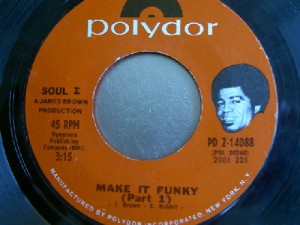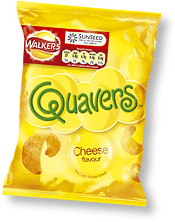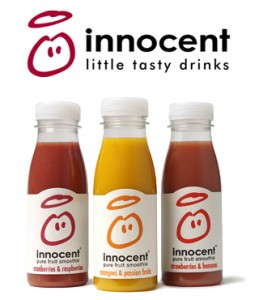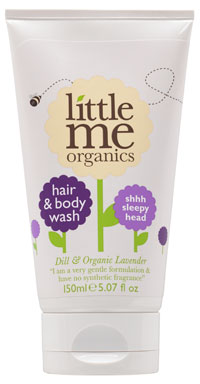On funky copywriting
‘Make it funky,’ hollered James Brown in 1971. But he was an uptight soul genius backed up by Clyde Stubblefield and Bootsy Collins. If anyone was going to make it funky, he was. For the rest of us, particularly copywriters, getting funked up is something that shouldn’t be rushed into. It may not be appropriate, it may not be effective and on occasion it may be very far from being ‘the bomb’ – whatever that is.
What is funk?
There are lots of definitions of ‘funky’, from musical to olfactory. In copywriting, our definition is probably something like ‘stylish and modern in an unconventional way’ or ‘not quite right; offbeat, unconventional or eccentric’. Funky copywriting takes an unexpected or unusual tone in relation to whatever the reader expects.
 In most cases, this means adopting a register that is less formal than expected in the context, featuring one or more of the following:
In most cases, this means adopting a register that is less formal than expected in the context, featuring one or more of the following:
- a warm, chatty tone of voice, like friends use with each other
- contractions – ‘we’re’, ‘don’t’, etc
- colloquialisms – e.g. ‘till the cows come home’, ‘give it a try’
- grammatical imprecision – sentence fragments, words missed out, misconjugations etc
- any other tropes, idioms or styles used in everyday speech rather than written language
- youthful usage – words and phrases that would be used by young people, or even children, including slang (‘chillax’, ‘sick’, ‘pwned’, ‘wibbly’, etc etc)
- light-heartedness, jokes and frivolity, often even when talking about ‘serious’ things (such as product specifications, origins of ingredients, legal matters etc)
- self-referential or metatextual devices that break down the fourth wall, foregrounding the nature, format or medium of the marketing communication itself (see Is meta copy better copy?)
- a fair amount of content that serves only to reinforce the tone, as opposed to serving one of the usual practical purposes of copywriting (informing the reader, communicating benefits, asking for the sale etc).
A funky tone is likely to be reinforced by the style and format in which it’s presented. In print or online, you might see rounded or handwriting fonts, text at an angle, rounded corners, bright colours and so on. In broadcast media, you’d expect to hear the words being spoken by Ruth Getz rather than Tim Piggott-Smith.
Funky vs informal
Some might say that the points above are just a definition of an informal tone of voice. In my mind, the distinction between informal and funky is the level of familiarity with the reader that is assumed.
Copy can be informal while still preserving a certain distance or respect – indeed, that’s the sort of tone I usually recommend for B2B clients. A good B2B website is friendly and engaging, but never forgets why the visitor is there. It’s the textual equivalent of the shirt without a tie, or talking across the corner of the table – friendly, collegial and collaborative, but still businesslike and focused.
In contrast, funky copy gives you a cheeky nudge and wants to be best friends forever. It’s definitely ‘off duty’ and up for a good time.
Gettin’ bad ain’t always good
When is it right to get funky? From one point of view, it’s easy to see how copywriters might regard funky text as a panacea. After all, we all want to get closer to the audience, right?
Well, if that were always the result, every ad would read like a teenager’s Facebook page. But getting too funky on the reader’s ass in the wrong context can be disorientating, perplexing or even irritating. Inappropriate funk can fatally damage rapport, rather than reinforcing it – imagine a funeral-home director who wears Adidas and you can see why.
With that in mind, let’s look at five different UK brands’ forays into funk and assess their success. Can I count it off like I did at the top, fellas?
Quavers
Quavers are cheese-flavoured potato snacks, a bit like Wotsits (Cheetos in the US). Actually, they’ve always struck me as being Wotsits’ poor relation, but there you go.
The package copy is a classic slice of funky writing:
Curly little things, Quavers, and no two are the same. Some twistier. Some that wrap around your tongue. But they’re all crunchy and melty, and pleasingly cheesy. So go on pop one in your mouth…
 I’m not sure I could improve on that – or as JB might put it, ‘the way I like it is the way it is’. In style terms, it ticks all the boxes: sentence fragments (‘some twistier’), contractions (‘they’re’), colloquial language (‘pop’, ‘cheesy’) and very little practical point (it’s selling you the product, but you’ve probably already bought it by the time you read the packet).
I’m not sure I could improve on that – or as JB might put it, ‘the way I like it is the way it is’. In style terms, it ticks all the boxes: sentence fragments (‘some twistier’), contractions (‘they’re’), colloquial language (‘pop’, ‘cheesy’) and very little practical point (it’s selling you the product, but you’ve probably already bought it by the time you read the packet).
In fact, it’s this last point that really lets this copy sing. Just as classic funk celebrates funk itself, so the best funky copy doesn’t overburden itself with meaning. All this copy does is evoke the sensual experience of eating Quavers in a light-hearted, melodious way that appeals both to the young and to the young in spirit. Walkers’ agency really tore the roof off the sucka.
Interactive Investor
From the sublime to the infuriating with Interactive Investor, which offers online share dealing and financial information. As a regular visitor I’ve had plenty of chances to see II’s error message, which reads as follows:
Oooops Requested Page Unavailable
Oooops, something’s not quite right but rest assured we’re working on it right now. Please try again in a minute.
The funky elements are the ‘Oooops’, the colloquial ‘not quite right’/’in a minute’ and the contraction ‘we’re’.
I think it’s fair to say that you should not fool about with your reader when they’ve got an irritating problem that’s not their fault. Interactive Investor is a serious site, used by serious investors with serious sums at stake. One reason for trying to log in to it might be the urgent need to close your ill-advised £100-per-point spread-bet long on Connaught before Isaac and Jemima’s school fees go up in smoke. In such a situation, the last thing visitors want to see is a cheeky, not to say facetious message written in haste by an immature web developer (as the mixture of informality and Apache-server-speak suggests). It’s completely at odds with the tone of the rest of the II site, it contains a blatant lie (are they really working on it ‘right now’ at the second the message is generated?) and obviously I think it’s a terrible mistake.
First Direct
First Direct was a trailblazer in the UK retail banking sector, offering the first ‘no branches’ phone-and-internet banking service (hence its name). From the outset, it’s signalled its difference from other banks through its informal tone of voice. (Ten years on, all the banks do the same thing, all the time – a particularly tiresome approach after they’ve shattered the economy by gambling our savings on CDOs.)
Sometimes the First Direct approach is cool, and sometimes it’s not. Here’s the legal notification at the base of each page on the First Direct website:
Because we want to make sure we’re doing a good job, we may monitor or record our calls. We hope you don’t mind.
![]() Note the use of contractions to signal informality. However, there are no easy synonyms for ‘monitor’ or ‘record’, so these words have to stay in, which is a bit jarring.
Note the use of contractions to signal informality. However, there are no easy synonyms for ‘monitor’ or ‘record’, so these words have to stay in, which is a bit jarring.
‘We hope you don’t mind’ is a bit disingenuous. It’s illegal to record someone on the phone without their knowledge or permission, but if you ask your bank to stop recording during the call you’ll probably get short shrift (I tried it with BT once and quickly got passed on to a manager). So this rather coy sentence is covering up a much harsher underlying reality.
Overall, I’m not sure how successful, appropriate or indeed necessary it is to phrase this particular text in this way. Although First Direct’s tone is generally successful, it might have considered dropping or modifying it here.
Innocent Drinks
 Innocent is a classic case of informal brand positioning and tone of voice. Taking the cue from the brand name, everything screams faux-naïf, childlike, wide-eyed innocence. It’s an instantly recognisable tone that forms a core part of the Innocent brand. It’s also easily parodied, as this amusing post demonstrates.
Innocent is a classic case of informal brand positioning and tone of voice. Taking the cue from the brand name, everything screams faux-naïf, childlike, wide-eyed innocence. It’s an instantly recognisable tone that forms a core part of the Innocent brand. It’s also easily parodied, as this amusing post demonstrates.
Innocent aren’t messing about. The tone has even been extended to its website’s meta descriptions, so that when you Google the brand you get a message right there in the search results:
Hello, we make lovely natural fruit drinks like pure fruit smoothies and fresh yoghurt thickies. Everything we produce tastes good and does you good.
 It’s a brilliant idea, brilliantly executed. Before you even click, you’re feeling the Innocent brand and also have a good sense of the product range and its USPs. The ‘hello’ is a nice touch acknowledging that the reader is probably encountering the brand for the first time. In marketing terms, Innocent has done all it can to make this ‘moment of truth’ an enjoyable experience.
It’s a brilliant idea, brilliantly executed. Before you even click, you’re feeling the Innocent brand and also have a good sense of the product range and its USPs. The ‘hello’ is a nice touch acknowledging that the reader is probably encountering the brand for the first time. In marketing terms, Innocent has done all it can to make this ‘moment of truth’ an enjoyable experience.
Click through to the website and you’ll find a cutesy tagline (‘little tasty drinks’), navigation links that jiggle up and down excitedly and plenty of all-lower-case text set in Futura Round (which used to be Mothercare’s font and is also used by Early Learning Centre) to connote childhood and learning. Tonewise, we’re tasting plenty of funk flavas – contractions, colloquialisms (a ‘bunch of veg pots’ is mentioned at the time of writing) and youthful usage (‘healthy stuff’).
Head over to the ‘things we make’ page and you’ll find the tone has been expertly extended to describe the product range:
Thickies: Live probiotic yoghurt, real fruit and honey all mixed up to make you feel wonderful.
Smoothies for kids: Just like our grown up smoothies, but with recipes specially selected for small people.
Technique-wise, I can’t fault this – it’s tight, concise, vivid. How successful it is all depends on whether you buy into it. If you find this tone engaging and different, you’re going to love being on the Innocent site. If you’ve come to find nutrition information for your allergy-ridden child or find out what Innocent are like to work for, it might grate a little bit.
But in fact, formality fans can still find tons to enjoy at Innocent. Because the tone actually devolves quite dramatically once you get away from the home page, whether intentionally or not. For example, this blog post almost completely abandons Innocent’s brand values, not to mention GCSE standards of English:
So what is GI exactely? [sic]
It’s a scale that ranks food on the effect they [sic] have on blood sugar levels. The scale runs from 0 to 100 and glucose is used as the reference and has a GI of 100. The effect that other foods have are [sic] compared to this. So the GI of a food tells us whether it raises blood glucose levels a little, moderately or alot [sic].
Since I’m talking tone, I won’t take Innocent to task for all the grammar and spelling howlers, embarrassing though they are, or criticise the shonky phrasing, or observe that defining the acronym ‘GI’ might have been a good idea. No. My point here is how quickly the tone has changed – in just two clicks from the home page. Now, Innocent might argue that this is deliberate, since the ‘serious stuff’ can’t easily be covered using their ‘selling’ tone. I think it’s probably more to do with the cost involved in getting a copywriter (or, indeed, a proofreader) to edit every blog post before it goes online.
We’d all like to think that readers will focus first on the parts of our website that we like the best, or where we’ve spent most time and effort. In our minds, we see them methodically working through our top-level pages one by one, just as we planned them out. Unfortunately, online, ‘do what thou wilt shall be the whole of the law’. People click where they’d like to click, not where you’d like them to click. If you want to deliver a consistent experience, you’ve got to make sure your brand values can be felt in every corner of the site. Your blog posts – which could easily be landing pages, after all – should sell as hard as your home page. And if you want to make it funky, you’d better take it right on to the bridge.
Little Me Organics
 Little Me is a range of organic toiletries for small children manufactured by KMI Brands. The following text is from the back of their hair and body wash with dill and organic lavender (you can also read it here):
Little Me is a range of organic toiletries for small children manufactured by KMI Brands. The following text is from the back of their hair and body wash with dill and organic lavender (you can also read it here):
Lots of mummys [sic] got together to create a range that was carefully selected to be the best for their little ones. Little Me Shhh Sleepy Head uses the safest and most gentle organic essential oils and botanicals to help relax baby for a restful night’s sleep whilst wrapping skin in loving moisture.
I’m too tired to correct the spelling so let’s get straight to the tone. ‘Lots of mummys got together’ is a good start, but then we flop back into the established language of consumer marketing with ‘range’ and ‘carefully selected’. As with Innocent, we need to see the funk maintained.
Now on to the instructions for use:
How to use: Ask Mummy or Daddy to apply a small amount on to their hand or wet cloth and gently massage it on to your wet little body (make sure they don’t get it into your eyes!), then rinse well…
This certainly makes a change from the usual ‘stern pharmacist’ tone we’re used to in this context. However, once again, the tone hasn’t been kept tight. ‘Apply’ should have been ‘squirt’, while ‘a small amount’ could have been ‘a little bit’ (or even ‘an ickle bit’). And ‘massage’ could have been ‘rub’ or ‘rub-a-dub’ without a catastrophic loss of meaning.
The use of the third person ‘ask Mummy or Daddy’ foregrounds one of the uncomfortable truths about funky copywriting – rather than being sincerely aimed at the reader themselves, it’s rather more cynically aimed at a fictitious third party that the reader perhaps identifies with, or aspires to. (Or, worse, that the marketer or copywriter aspires to.) In this case, the reader is invited to project their own bibbly-wibbly language on to the actual end consumer, their child – great if they buy into it, crashingly embarrassing if they don’t.
The same fictitiously funky target audience is used in many other contexts. For example, video games like Tony Hawk’s Pro Skater and the Burnout series are marketed with the ‘extreme’ language of US teenagers, even though many of those buying them are full-grown men with jobs. So we see ridiculously ‘street’ and ‘youth’ language being deployed in a marketing communication that’s actually passing from one 30-something white-collar executive to another.
Finally, here’s the cross-sell punchline from the Little Me package:
Remember, tell your Mummy or Daddy that there are other products in the Little Me Organics range that you can have oodles of fun with.
Once again, we’ve got a slight mismatch between the youthful usage of ‘oodles’ and the marketer-speak of ‘products’ and ‘range’ – although, being charitable, this contrast could have been what they were aiming for. For me, though, the Little Me copy demonstrates the importance of keeping your funky tone of voice consistent in the passages where you’ve decided to use it – and, as a corollary, not striking a tone that you can’t sustain.
Lack of confidence
A while ago, I tweeted this: ‘I’m sure a lot of funky copy gets approved because people are afraid of looking boring’. Fellow copywriter Richard Hollins responded that ‘With a few exceptions, funky language indicates a lack of confidence in your message’. I’m sure he’s right.
Such a lack of confidence can be either emotional and rational. Emotional lack of confidence often results from plain old boredom – you’ve done so many ads or leaflets in the same vein, year after year, that you feel you simply must shake things up a bit. But it’s crucial to remember that new readers are always coming to your brand and your message afresh. If they don’t get the facts, benefits and brand tone that have traditionally led people to buy from you, your marketing is not going to deliver growth. On top of that, your new tone might not please your existing fans. Change your tone of voice by all means, but do it because customers’ tastes have evolved – not because you feel like a change.
Rational lack of confidence in the message – that is, you know it’s weak – means either that the message hasn’t been defined or refined enough, or that the underlying value proposition won’t cut it. Either way, a funky tone of voice ain’t gonna fix what’s broken. Go back to the drawing board until you’ve got a message that doesn’t need bells and whistles on it to be convincing.
Is it time to get funky?
If it’s inappropriate, or done ineptly, funky copy can easily come across like an uncle breakdancing at a wedding – eager to please but ultimately insincere and rather pathetic. And the impact on the communication is disastrous – not only do you fail to connect with your imagined ‘funky’ readership, but you alienate the dull-but-viable readers you should have targeted in the first place.
So before you decide to funk up your copy, the key questions to consider are:
- Who are we talking to?
- What tone would they expect in this situation? Are we departing from the expected tone?
- Is our chosen tone more likely to appeal to them, and prompt them to take the actions we want?
- How do we know they’ll like our tone in this particular context? Are we making assumptions, or projecting our views on to theirs?
- Why are we writing like this? Why is a simple, factual style not appropriate here?
- Does this tone of voice enhance my message, or detract from it?
- Are we sure we’d lose the audience if we lost the funk?
I’m not saying that dropping the funk is never appropriate. Just be sure that it does something for the core of the copy, as well as its surface, before you get on the good foot.
Tags: Burnout, first direct, Funk, Funky copywriting, Innocent Drinks, Interactive Investor, James Brown, Little Me Organics, Quavers, Tone of voice, Tony Hawk Pro Skater

